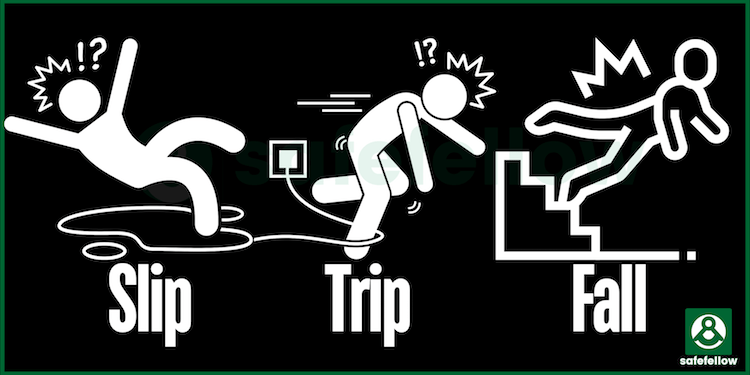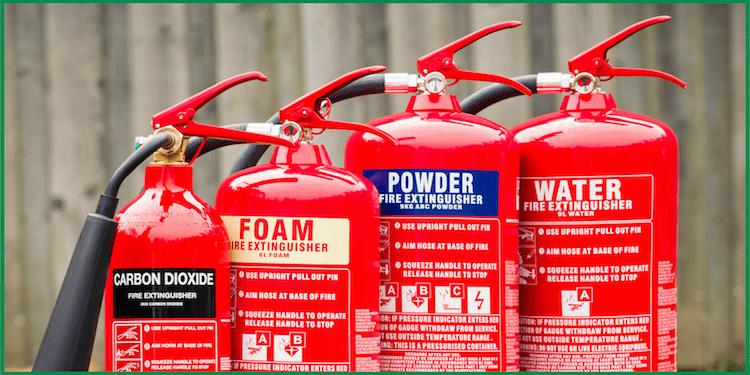Road driving is a privilege that comes with safety responsibility. This article will delve into the crucial aspects of driving safety, emphasizing the need for responsible behavior on the roadway.
From seatbelt usage to avoiding distractions, defensive driving, adhering to speed limits, driving under the influence (DUI), knowing your limit, and weather factoring.
Let’s navigate the full key elements contributing to a safer driving experience.
1. Buckle Up for Safety: The Seatbelt Mandate
The foundation of driving safety begins with a simple click–the sound of a seatbelt securing its occupant.
Wearing seatbelts while driving is a legal requirement and a life-saving habit that cannot be compromised. The effectiveness of seatbelts in preventing injuries during accidents is undeniable.
It is an undisputed fact that the National Highway Traffic Safety Administration i.e., NHTSA, has stated that an impressive 14,955 lives were saved in 2017 alone, thanks to the use of seat belts.
The NHTSA also confirms that wearing a seatbelt significantly reduces the risk of fatal injuries. Specifically, front-seat passengers can expect a 45% reduction, while drivers of pickups and SUVs can expect an even more significant reduction of 60%.
These staggering statistics affirm the importance of seatbelt usage while driving to prevent injuries and save lives in the event of an accident.
By buckling up, you are fulfilling your legal responsibility and taking a confident step toward ensuring your safety and the safety of others on the road.
2. Distracted Driving: Eyes on the Road, Hands on the Wheel
Distracted driving is a severe issue that significantly threatens road safety. With the increasing prevalence of smartphones and other gadgets, drivers are more prone to distractions than ever before.
Texting, calling, or adjusting the radio while driving can significantly reduce a driver’s reaction time and increase the risk of accidents. The National Highway Traffic Safety Administration i.e., NHTSA, reported that distracted driving claimed 3,522 lives in 2021.
Taking proactive measures to minimize distractions is crucial to stay focused while driving. One way to do this is by turning off your phone or putting it on silence altogether. If you need to use your phone, consider using a hands-free device.
It is also important to avoid multitasking while driving. Grooming, eating, or drinking while behind the wheel can take your attention away from the road, which can be extremely dangerous.
To remain focused while driving, take proactive steps to prepare, including adjusting your mirrors and seat before starting the car, setting your GPS destination beforehand, and preparing any necessary music or audiobooks before driving.
Staying alert and focused while driving signifies taking responsibility for your safety and the safety of others on the road.
Remember that a moment of distraction can lead to a lifetime of regret. So, be confident and take charge of your driving experience to ensure a safe and enjoyable journey.
3. Defensive Driving: Anticipate, React, Survive
Defensive driving is an indispensable skill every driver must possess to prevent accidents and ensure road safety. Also, defensive driving is anticipating and taking proactive measures to avoid on-the-road hazards.
Maintaining a safe following distance is a critical technique of defensive driving. It allows for enough reaction time in case the vehicle ahead of you unexpectedly stops or slows down; you will be ready to come to a stop promptly.
The general rule of thumb is to keep at least a two-second gap between your vehicle and the one in front of you. However, this gap should be increased to at least four seconds in adverse weather conditions.
Anticipating the actions of other drivers is another crucial aspect of defensive driving. By observing their behavior, you can predict potential dangers and take proactive measures to avoid them.
Being aware of potential hazards on the road is also vital, which includes watching for pedestrians, bicyclists, and animals that may suddenly appear on the road.
It is also essential to be aware of road conditions such as potholes, construction sites, or wet and slippery surfaces, which can increase the risk of accidents.
By practicing defensive driving techniques, you are taking responsibility for your safety and the safety of others on the road.
Always remember, defensive driving is not just about reacting to potential hazards; it is about anticipating them and taking proactive measures to avoid them.
4. Know Your Limits: The Dangers of Fatigue and Tiredness
Driving while fatigued is a significant risk factor that can lead to accidents on the road.
Recognizing the signs of driver fatigue and taking proactive measures to avoid driving in such a state is crucial. Doing so can ensure a safer journey for yourself and others on the road.
One effective strategy for avoiding driver fatigue is to take regular breaks during long journeys. Break allows you to rest and recharge, reducing the risk of fatigue-related accidents. Experts recommend taking a break every two hours or every 100 miles of driving.
In addition, staying hydrated, avoiding heavy meals before driving, and getting enough sleep before embarking on long journeys can help you stay alert and focused while driving.
To prevent driver fatigue, staying mentally alert while driving is essential. Engaging in lively conversations with passengers or listening to energetic music are proven methods that can keep your mind active and awake.
It is important to remember that driving while tired is dangerous and illegal in some states. Therefore, you must recognize the signs of driver fatigue and take proactive measures to avoid driving in such a state.
5. Adhering to Speed Limits: Time Saved vs. Lives Risked
Speeding is one of the leading causes of roadway accidents and poses a significant threat to road safety. It is indisputable that driving above the speed limit can significantly increase the risk of accidents and injuries.
The National Highway Traffic Safety Administration–NHTSA, reported that speeding was a contributing factor in a staggering 26% of all traffic fatalities in 2019. The Insurance Institute for Highway Safety reported speed is a factor in almost one-third of all traffic fatalities.
Disregarding speed limits can have catastrophic consequences, not only for the driver but also for other road users.
Speeding can drastically reduce a driver’s reaction time, making it difficult to respond to unexpected situations on the road. It can also amplify the severity of injuries sustained in an accident.
Furthermore, the time saved by speeding is often negligible compared to the risks involved. For instance, driving at 70 mph instead of 60 mph might save only a few minutes on a long journey, but it can significantly increase the risk of an accident.
It is essential to recognize that speed limits are not arbitrary; they are set based on road conditions, traffic flow, and other factors that affect road safety. Exceeding the speed limit means disregarding these factors and putting oneself and others at grave risk.
Driving responsibly and within the prescribed limits is imperative to ensure a safe and enjoyable journey for oneself and others on the road. Remember, arriving a few minutes late is significantly better than not arriving at all.
6. Impaired Driving: The Lethal Mix of Alcohol and Roads
Driving under the influence of controlled substances, e.g., drugs or alcohol, is an illegal and dangerous activity that poses a severe threat to road safety.
According to NHTSA–National Highway Traffic Safety Administration, alcohol-impaired driving caused 10,511 deaths in 2018, which accounted for almost 29% of all traffic fatalities in the United States.
Impaired driving significantly affects a driver’s ability to concentrate, react, and make rational decisions on the road. Alcohol and drugs can impair cognitive and motor skills, including vision, coordination, and reaction time, which can lead to accidents, injuries, and fatalities.
Apart from the risk of accidents, driving under the influence of controlled substances can have severe legal and personal consequences. In most states, driving under the influence of drugs and alcohol is a criminal offense that can result in suspension of driving privileges, hefty fines, and even imprisonment.
Moreover, a Driving-Under-Influence (DUI) conviction can have a long-lasting impact on an individual’s personal and professional life, including employment opportunities, social stigma, and higher insurance rates.
However, there is a simple solution to this problem. Prioritizing responsible behavior on the road and avoiding driving under the influence of substances can save lives and prevent serious legal and personal consequences. Make alternative arrangements for transportation, such as a designated driver, taxi, ride-sharing app, or public transportation, if you plan on partying to the level of intoxication.
Remember, impaired driving is not worth the risk of endangering your life and the lives of others on the road and facing the severe and long-lasting consequences that come with it. So, make the right choice and stay safe on the road.
7. Weathering the Elements: Safe Driving in Adverse Conditions
Adverse weather conditions can be challenging, even for the most experienced drivers. Rain, snow, fog, and other weather scenarios can significantly impact visibility, traction, and vehicle handling, increasing the risk of road accidents.
However, with the proper preparation and adjustments to your driving behavior, you can stay safe while driving in challenging weather conditions.
1. Driving in Rain
Driving in the rain can significantly reduce visibility and decrease traction, making it challenging to control your vehicle. Here are some tips you should follow to ensure safety while driving in the rain:
- Slow down: Wet roads can be slippery, reducing your vehicle’s handling capability. Slowing down will give you more time to react to potential hazards.
- Increase your following distance: It takes longer to stop on wet roads, so it is crucial to increase your following distance to allow for better reaction time.
- Turn on your headlights: Turning on your headlights can improve visibility for both you and other drivers on the road.
2. Driving in Snow
Driving in snow requires extra caution and preparation. Snow can reduce visibility, decrease traction, and make it challenging to control your vehicle. Here are some tips to ensure safety while driving on snowy roads:
- Slow down: Snowy roads can be slippery and take longer to stop your vehicle. By slowing down, you can allow yourself more time to react to potential hazards.
- Increase your following distance: It is essential to increase your following distance to allow for better reaction time for sudden stops or turns.
- Use snow chains or tires: Snow tires or chains can significantly improve traction, making it easier to control your vehicle in snowy conditions.
3. Driving in Fog
Fog can significantly reduce visibility, challenging seeing other vehicles and potential hazards. To stay safe while driving in fog, consider the following tips:
- Slow down: Give yourself more time to react to potential hazards.
- Turn on your low-beam headlights: Low-beam headlights can improve visibility without reflecting into your eyes, making it easier to see the road ahead.
- Use fog lights if available: If your vehicle has fog lights, turn them on to improve visibility.
4. Driving in Other Challenging Weather Conditions
Other weather conditions, such as high winds, hail, or sleet, can also pose challenges for drivers. To stay safe in these conditions, consider the following tips:
- Slow down: Give yourself more time to react to potential hazards.
- Increase your following distance: It is essential to increase your following distance to allow for better reaction time for sudden stops or turns.
- Be aware of potential hazards: Be mindful of hazards such as fallen branches or debris on the road.
Remember, your safety and the safety of others on the road are paramount, so always take extra precautions when driving in challenging weather scenarios.
Bottomline
Responsible driving is a commitment to safety that extends beyond oneself to the entire community of road users.
By adopting the highlighted principles and recognizing the impact of individual actions, drivers can contribute to a safety culture on the road. Let’s make every journey safe by embracing the road to responsibility.
Do you enjoy this reading? Kindly share with family, friends, and colleagues. Thanks! 🙂



